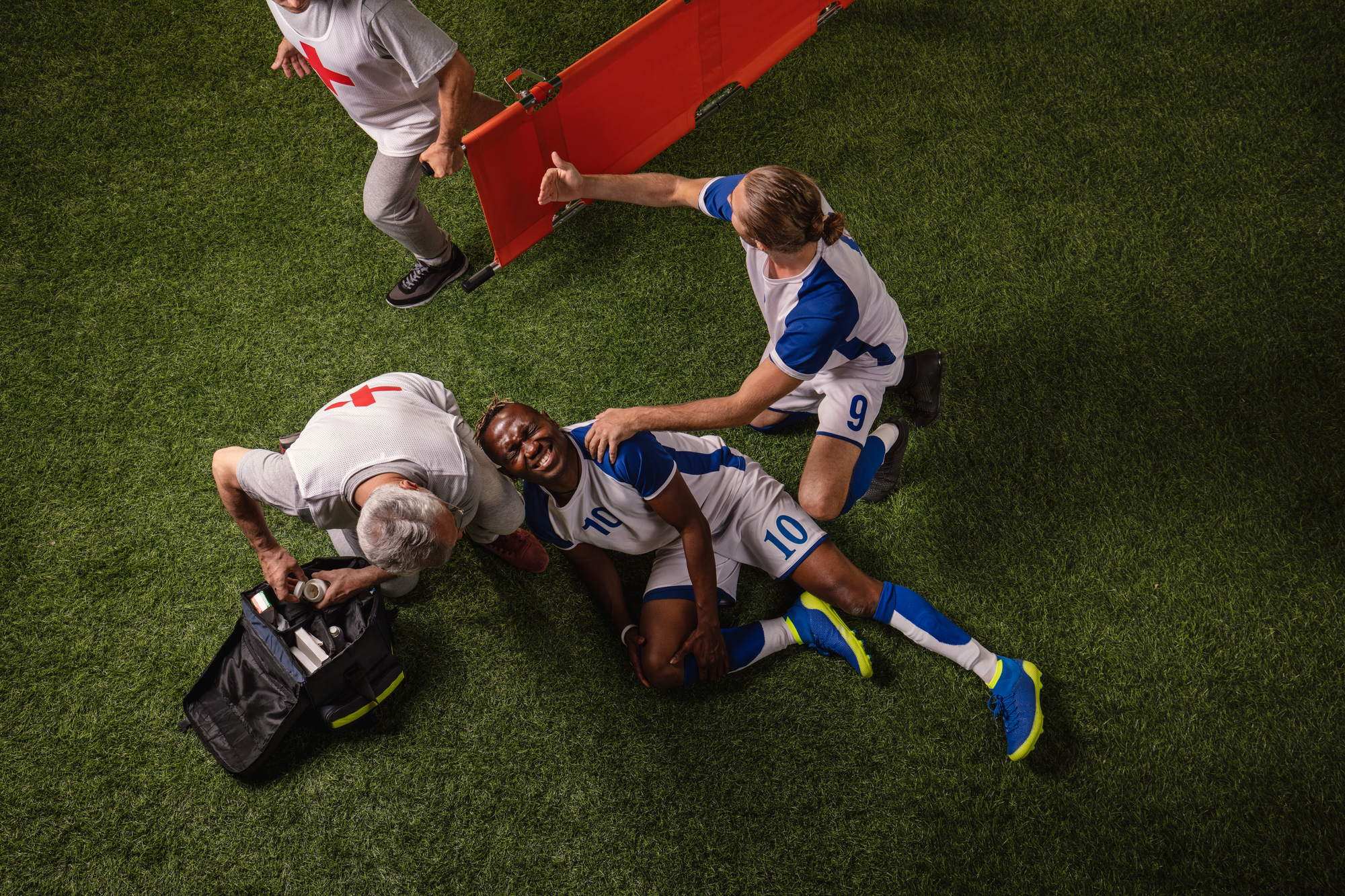
Injury prevention is a cornerstone of athletic success and overall well-being for athletes of all levels and ages. By implementing a comprehensive approach to minimize the risk of injuries, athletes can not only safeguard their health but also maintain consistent training and peak performance.
Injury prevention strategies encompass various aspects, including proper technique, strength and conditioning programs, warm-up and cool-down routines, adequate rest, and the use of protective gear. These measures not only reduce the physical and financial burden of injuries but also contribute to the athletes’ mental resilience and long-term athletic development.
Embracing a culture of safety and prioritizing injury prevention is essential for athletes to thrive in their sports and achieve their goals while enjoying a healthy and fulfilling athletic journey.
Here are a few examples of injury prevention strategies for young athletes:
- Pre-Participation Physical Exams (PPE): Regular PPEs help identify underlying medical conditions and physical limitations that may increase injury risk.
- Proper Coaching and Technique Instruction: Coaches play a significant role in teaching athletes proper techniques to reduce the risk of injuries. Emphasizing safe and age-appropriate training loads and volume is crucial.
- Strength and Conditioning: Age-appropriate strength and conditioning programs help young athletes build muscle strength, endurance, and resilience. Focus on strengthening core, hip, and lower extremity muscles to prevent common sports-related injuries.
- Proper Warm-Up and Cool-Down Routines: Incorporate dynamic warm-up exercises before practices and games to prepare muscles and joints for activity. Cool-down routines help with recovery and reduce muscle soreness.
- Injury Awareness and Education: Teaching athletes about common sports injuries, injury signs, and when to seek medical attention enhances awareness and early intervention.
- Proper Nutrition and Hydration: Adequate nutrition and hydration support overall health, performance, and injury prevention.
- Rest and Recovery: Adequate sleep and rest days are crucial for recovery and injury prevention.
- Avoid Single Sport Specialization: Earlier single sport specialization has been linked to higher rates of injury and burnout in young athletes, allowing for multi-sport participation is crucial for development and recovery.
- Sport-Specific Equipment and Safety Gear: Ensuring athletes use appropriate safety gear, such as helmets, pads, and footwear, can reduce injury risk.
- Regular Monitoring and Assessment: Periodic assessments of an athlete’s physical condition, including strength, flexibility, and balance, can help identify areas that need attention.
- Sports Psychology and Mental Conditioning: Mental toughness and psychological resilience training can help athletes cope with stress, anxiety, and setbacks, reducing the risk of injury due to psychological factors.
- Emergency Action Plans (EAPs): Having EAPs in place ensures prompt and appropriate care in case of injury, reducing the risk of complications.
In summary, injury prevention in young athletes is crucial for their overall health, well-being, and athletic development. It requires a comprehensive approach, involving athletes, coaches, parents, and healthcare professionals, to create a safe and supportive sports environment that minimizes injury risk and maximizes the potential for a successful and enjoyable athletic career.

Dr. Mark Sando is an internationally recognized orthopaedic surgeon specializing in sports medicine, arthroscopy and injuries of the shoulder, knee and hip. He earned his medical degree from Case Western Reserve University School of Medicine and completed residency at the University of Maryland Medical Center and R Adams Cowley Shock Trauma Center. After residency, Dr. Sando went on to complete subspecialized training in Sports Medicine as a fellow at the prestigious Kerlan-Jobe Orthopaedic Clinic in Los Angeles, CA under the direction of Dr. Neal ElAttrache. He has worked with numerous college athletic programs and professional teams including the world champion Los Angeles Kings, Los Angeles Lakers, Los Angeles Dodgers, and Los Angeles Sparks. Dr. Sando has been with the Orthopaedic Medical Group of Tampa Bay since 2015. Full Bio




